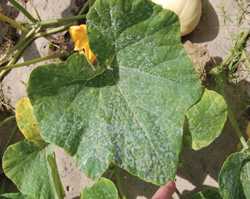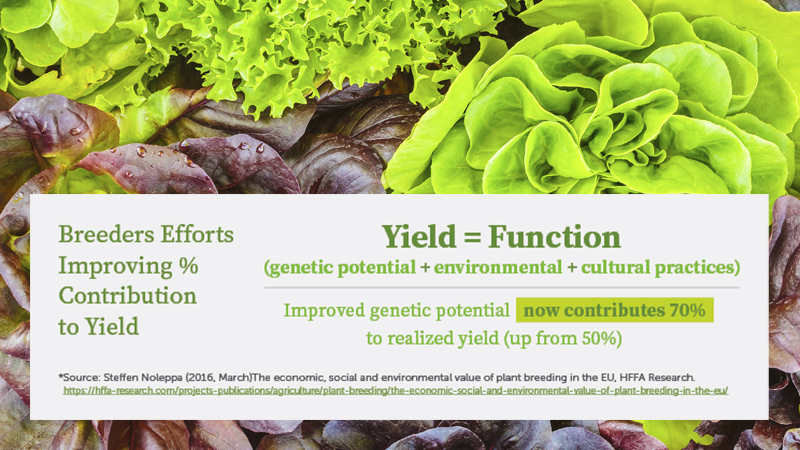Fungal Fight

Spotting Symptoms
Earliest maturing leaves lower in the canopy are typically the first to exhibit disease symptoms, and these leaves develop reddish-brown, small, restrained round spots. These spots become white as the fungi grows and produces an abundance of spores. At this stage, the disease is easy to identify with its white talcum-like symptoms that can be seen on both the upper and lower surfaces of the leaves, on petioles, and on stems. It affects the leaves, reducing their size and number. As a result, the fruit get exposed to sunburn damage. In cucurbits, such as yellow squash and zucchini, infection to the fruit can reduce yield and quality. Also, it predisposes the plants to other diseases. The development of powdery mildew is favored by cool temperatures (75°F-85°F), high humidity (80%-95%), and low light intensity or cloudy days. Fungal conidia are produced profusely in the white powdery mycelium, and any wind or air movement easily carries these spores to any adjacent leaves or plants, as well as to other nearby fields or fields at greater distances.
- Cucumber cultivars with resistance or tolerance to powdery mildew
- Melon cultivars with resistance or tolerance to powdery mildew
- Squash cultivars with resistance or tolerance to powdery mildew
Gaining Control
Selecting disease-resistant varieties is the best method of controlling the incidence of this problem. Currently disease resistant varieties are available for cucumber, melon, squash, and pumpkin. For watermelon, the development of disease-resistant varieties is currently still in progress. Cultural practices, such as optimum or reduced plant density, adjusting planting dates, and destroying volunteer plants, help prevent the incidence of the disease.
For effective chemical control of powdery mildew, apply fungicides at the first appearance of symptoms — react early. A regular scouting of the field and greenhouse for disease symptoms in the cucurbit plants is necessary to detect the beginning of a powdery mildew infection, so that the necessary treatment can be initiated. Continue on a 7-day or 14-day spray program and rotate fungicide modes of action to prevent resistance. Include a protectant, such as chlorothalonil, in every spray application. The label is the law, so always read the label before use and follow the directions on it.
Crop Protection Choices
Strobilurins fungicides [FRAC group 11 products, mode of action: curative, locally systemic] like Flint (trifloxystrobin, Bayer CropScience), Quadris (azoxystrobin, Syngenta Crop Protection), Pristine (pyraclostrobin + boscalid, BASF), Cabrio (pyraclostrobin, BASF) and demethylation inhibitors [FRAC group 3 products, mode of action: curative, locally systemic] Nova (myclobutanil, Dow AgroSciences), Procure (triflumizole, Chemtura AgroSolutions), Folicur (tebuconazole, Bayer CropScience) can be very effective in controlling the disease until powdery mildew develops resistance. Be observant of efficacy of control, especially on the upper leaves.
Quintec (quinoxyfen, Dow AgroSciences; FRAC group 13 product, activity: protectant) is a new fungicide labeled for cantaloupes and watermelons in 2007. It has been very effective in controlling powdery mildew on cucurbits in several states and for multiple years. Application of this fungicide is limited to four applications per season, and no more than two applications can be made consecutively. Quintec should be used in rotation with a different mode of action product.
Biorational compounds do not cause phytotoxic symptoms to the cucurbit plants. The mechanism by which these materials suppress the disease is unknown. They can be used to reduce incidence of infection by powdery mildew in cucurbit crops. Here are some examples of biorational fungicides — oils, peroxigens, cow’s milk, silicon, potassium salts, bicarbonates, phosphates, Ampelomyces, and Bacillus species.









